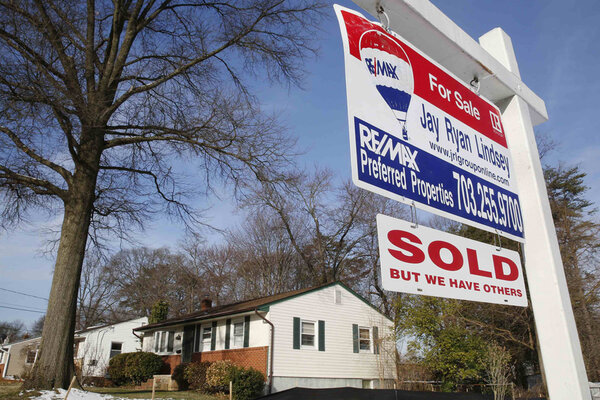US existing home sales rose 5.1 percent in May to their highest pace since November 2009, after bouncing back from April’s disappointing numbers. But analysts warn that rising home prices and mortgage rates could inevitably price more buyers out of the market.
Home sales increased to a seasonally adjusted annual rate of 5.35 million last month, according to a report released Monday by the National Association of Realtors (NAR). The increase in home sales was refreshing after April’s numbers, when home sales dropped 3.3 percent to 5.09 million.
Sales have now increased year-over-year for eight consecutive months and are 9.2 percent above the level seen a year ago. Each region of the US saw some gains in sales, though the Northeast led the charge with an 11.3 percent sales increase. NAR’s chief economist Lawrence Yun said in the report that sales were “solid,” though people will need to keep an eye out on new construction and supply.
“Overall supply still remains tight, homes are selling fast and price growth in many markets continues to teeter at or near double-digit appreciation. Without solid gains in new home construction, prices will likely stay elevated — even with higher mortgage rates above 4 percent."
The report shows home sales performed slightly better than analysts had predicted. Economists estimated home sales would rise 4.8 percent to a seasonally adjusted annual rate of 5.28 million homes, according to a FactSet survey via The Associated Press.
While the gains in home sales is good news, there is still concern over who can afford them. The NAR reported the median existing-home price in May was $228,700. Not only this is up nearly 1 percent from April’s median prices, but it also shows a 7.9 percent increase from a year ago and marks the 39th consecutive month of year-over-year price gains.
Meanwhile, the gap between minimum wage and housing affordability continues to widen. House prices in the US jumped 17.3 percent between 2012 and 2014, as previously reported by The Christian Science Monitor. During that same period, wages slightly ticked up 1.3 percent.
Millennials in particular are left out of several housing markets; they are priced out of 13 of the 50 largest metropolitan areas in the US, according to Bloomberg. It still leaves Millennials with options, but the 13 cities that are beyond their means are some of the most desirable areas of the country, like San Jose, New York, and Denver. To be able to live in San Jose, the average Millennial would have to earn an additional $80,000 to afford a mortgage in the city. It makes New York, where Millennials would need an extra $6,550 to close the gap between their wages and a mortgage, look like a bargain.
Another concern is the hike in mortgage rates. Up until last week's drop, mortgage rates had been increasing for weeks. Freddie Mac reported on Friday that 30-year and 15-year rates barely trickled down to 4 percent and 3.23 percent. FactSet economists also warned that the recent sales gains could be short-lived if prices go up sharply enough to price potential buyers out of the market.
There's a hopeful sign, however, in that a growing proportion of people buying homes in May were first-time buyers. The percent share of first-time buyers rose to 32 percent in May, up from 30 percent in April and matching the highest share since September 2012.
"Recent policy changes are supporting increased activity," IHS Global Insight economists Patrick Newport and Stephanie Karol write in an e-mailed report. "Both Fannie Mae and Freddie Mac have introduced low-down-payment products, aimed at helping younger people buy their first home. These “conventional 97” programs are tailored towards helping people with little savings but good credit scores – higher than those required for conventional loans – buy single-family properties. Fannie Mae’s program has been available since December; Freddie Mac’s has been around since mid-March."
"More first-time buyers are expected to enter the market in coming months, but the overall share climbing higher will depend on how fast rates and prices rise,” Yun added.
http://www.csmonitor.com/Business/new-economy/2015/0622/US-existing-home-sales-climb-5.1-in-May-but-prices-keep-jumping-too
